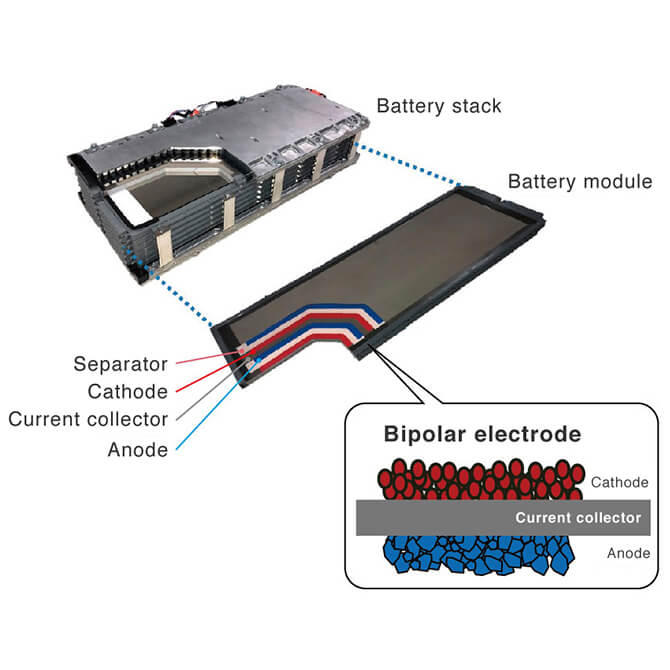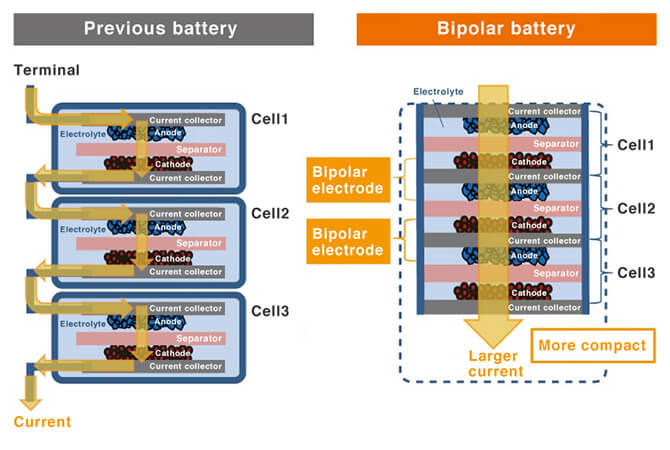Batteries
Contributing to the Expansion and Widespread Use of Electrified Vehicles through Innovative Batteries
Bipolar nickel-metal hydride batteries for hybrid vehicles were jointly developed with Toyota Motor Corporation, with production for the Toyota Aqua beginning at the Kyowa Plant in May 2021. To contribute toward the expansion and spread of electric vehicles, and work toward carbon neutrality, Toyota Industries will expand its lineup of batteries to suit a range of models. At the same time, it is working to stabilize supply using a production line established at the Ishihama Plant, which was newly opened in fiscal 2022.
World’s First Bipolar Structure
In bipolar nickel-metal hydride batteries, a cathode is applied to one side of a metal component called a current collector and an anode to the other; several of these structures, which are known as “bipolar electrodes,” are stacked together to form a battery. The Aqua is the world’s first vehicle to use a bipolar nickel-metal hydride battery as an electric drive battery.

Achieving Compactness and Higher Output
As the term “bipolar” indicates, the current collector can be shared by a cathode and an anode. This technique reduces the number of parts and thus enables the battery to be made more compact. It is also possible to stack a larger number of cells. In addition, since bipolar batteries have a wider electrical path and a simpler construction, there is lower resistance within the battery itself. This enables the flow of larger currents, achieving approximately twice the output of the conventional nickel-metal hydride battery equipped in the previous-generation Aqua.

